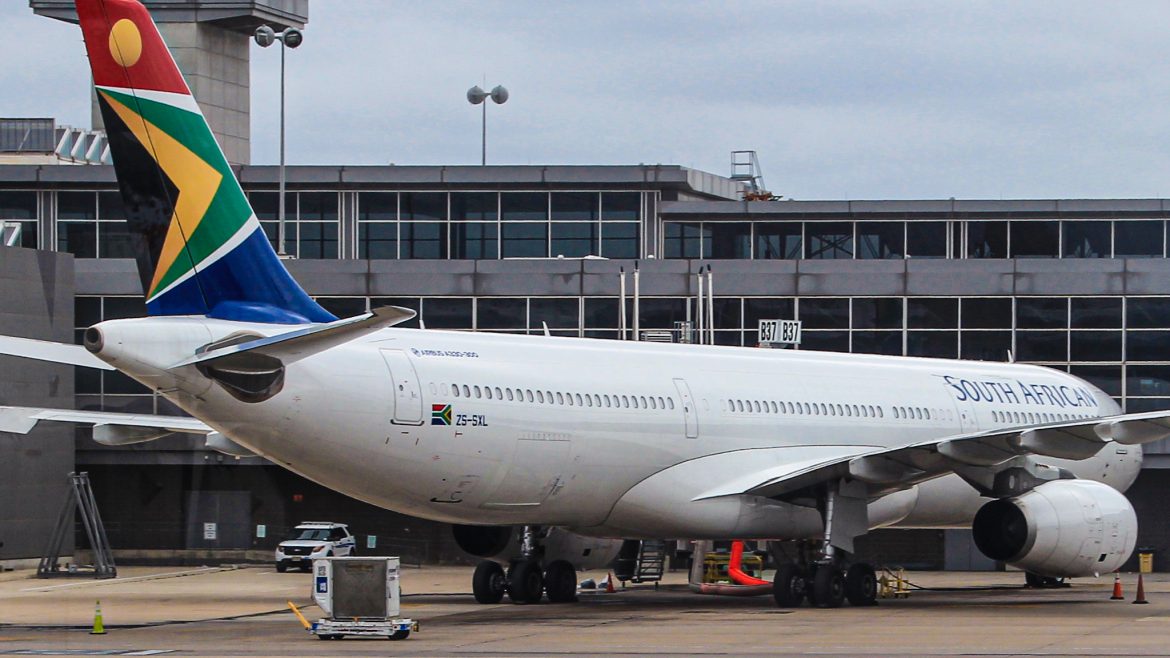South Africa’s airline industry is teetering on the brink, hit by a perfect storm of failing navigation systems and deteriorating airport infrastructure. The result: frequent flight cancellations and delays, mounting financial pressure, and frustrated passengers.
Aaron Munetsi, CEO of the Airlines Association of Southern Africa (AASA), sounds the alarm.
“We’ve been having several challenges with both the operations at our airports and from the aviation navigation services provider,” he told the Money Show. AASA represents 17 African airlines, including Airlink, FlySafair, and South African Airways, as well as aircraft manufacturers such as Boeing and Airbus.
A critical issue is the country’s Instrument Flight Procedures (IFPs), essentially the “road map” pilots depend on when flying between airports. Munetsi emphasised that these procedures require validation by the South African Civil Aviation Authority (SACAA), and many have been allowed to lapse.
In March, the Minister of Transport, Barbara Creecy, revealed that a committee’s diagnostic report had uncovered staffing shortages, unreliable communication-navigation-surveillance (CNS) systems, suspended flight procedures, and governance gaps within Air Traffic and Navigation Services (ATNS). Though a roadmap for fixes is underway, many instrument procedures remain unvalidated, especially at major airports like OR Tambo, Cape Town, King Shaka, George, and others.
The consequences are severe. Since July 2024, 326 instrument flight procedures were withdrawn. This has led to widespread flight delays, diversions, and cancellations—AASA reports one airline alone suffered nearly 3,900 delays, 77 cancellations, and 12 diversions, adding up to a staggering 91,075 minutes of delay.
Furthermore, Munetsi pointed to a cyber breach at the South African Weather Service, which disrupted aviation weather forecasts—information legally required before flights can depart.
The outages and navigational failures have not only undermined passenger confidence but also struck airlines hard. FlySafair has reported an extra R3 million in fuel costs each month due to unnecessary holding patterns and diversions. Airlink alone incurred R55 million in related costs.
These disruptions have broader economic implications. Freight and medical flights, fragile supply chains, tourism, and emergency services have all been affected, threatening South Africa’s post-pandemic economic recovery.
AASA is now demanding accountability. Munetsi argued that airlines have continued to pay user fees despite receiving degraded services. Regulators should audit how funds from these fees were spent before approving any tariff increases.
Airport infrastructure issues compound the problem, from faulty fuel systems at OR Tambo to power disruptions at Cape Town International Airport.
In response, Transport Minister Creecy has taken action. ATNS’s CEO was suspended pending an investigation, while ATNS itself received a two-week deadline to resolve the suspended navigation procedures. The expert committee’s findings have been adopted and work is underway to address staffing shortages, CNS upgrades, and flight procedure validation.
However, fixes are not instantaneous. Experts warn full restoration of instrument flight procedures could take until end of 2025.
Industry leaders underscore that safe, reliable air traffic navigation and airport infrastructure are foundational to aviation’s role in economic growth and connectivity. Unless rapid progress is made, they warn the airline industry—and its millions of passengers—will continue to feel the impact.
